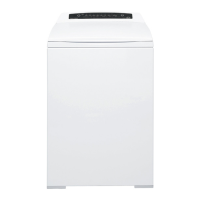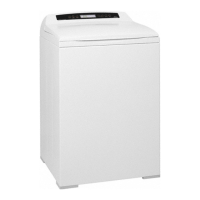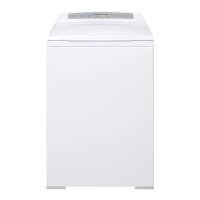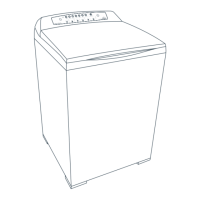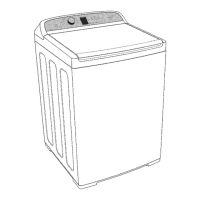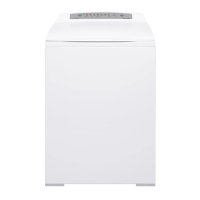478182
24
4.9.10 SmartPump™ Test Routine
Use the following procedure to test the SmartPump™. It is equally important to test both the drain
and recirculation modes. In diagnostic mode the lid lock is disabled, which allows the technician to
visually inspect both aspects of the pump.
1. Enter diagnostic mode. (Refer to Section
6 for LCD models, or Section 7 for LED models.)
2. If the inner basket is empty of water, activate either or both of the water valves until the inner
basket is approximately 1/4 full with water. (Refer to Section
6.1.2 for LCD models, or Section
7.2 for LED models.)
3. While in diagnostic mode, set the pump to Recirculation Mode (refer to Section
6.1.2 for LCD
models, or Section
7.2 for LED models), run for at least 1 minute and observe the following:
Ensure that a good flow rate is being delivered through the portal of the hose.
Ensure that a good pattern of flow is being delivered. If a poor flow rate is apparent, firstly
check that the neck ring is fitted correctly and is not obstructing the flow of water.
Secondly, remove the neck ring and check the shape and location of the recirculation
nozzle is as expected. If no faults are found, the pump must be inspected. To access the
pump cavity, (refer to Section
0).
Ensure that no leaks are occurring from either the recirculation hose where it attaches to
the outer bowl (to do this the top deck will need to be lifted, refer to Section Error!
Reference source not found.), or where it attaches to the SmartPump™.
Ensure that no water is exiting from the drain hose. If it is, this indicates that water is
bypassing. For the description of bypassing, refer to Section
4.9.11.
4. Again, whilst in diagnostic mode, set the machine to drain (refer to Section
6.1.2 for LCD
models, or Section
7.2 for LED models), run for at least 1 minute or until all water has been
drained, and observe the following:
Ensure that a good pattern of flow is being delivered. If a poor flow rate is apparent the
pump must be inspected. To access the pump cavity, refer to Section
0.
Ensure there are no leaks from where the drain hose exits from the cabinet or at the pump
housing.
Ensure no water is exiting from the recirculation hose. Again, this would indicate that
bypassing is occurring.
4.9.11 Bypassing
Bypassing is the term given to water that either flows from the recirculation hose when the pump is
draining, or from the drain hose when the pump is re-circulating. No water at all should exit from
the opposing hose. The flapper valve not sealing against the face of the pump cavity, or a poor fit
of the hood and cap can generally cause bypassing.
If bypassing occurs, the pump (including the SLR Feature (refer to Section
4.9.7) must be
inspected. To access the pump cavity (refer to Section
0).
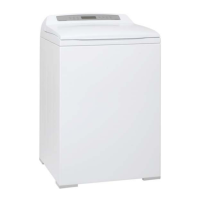
